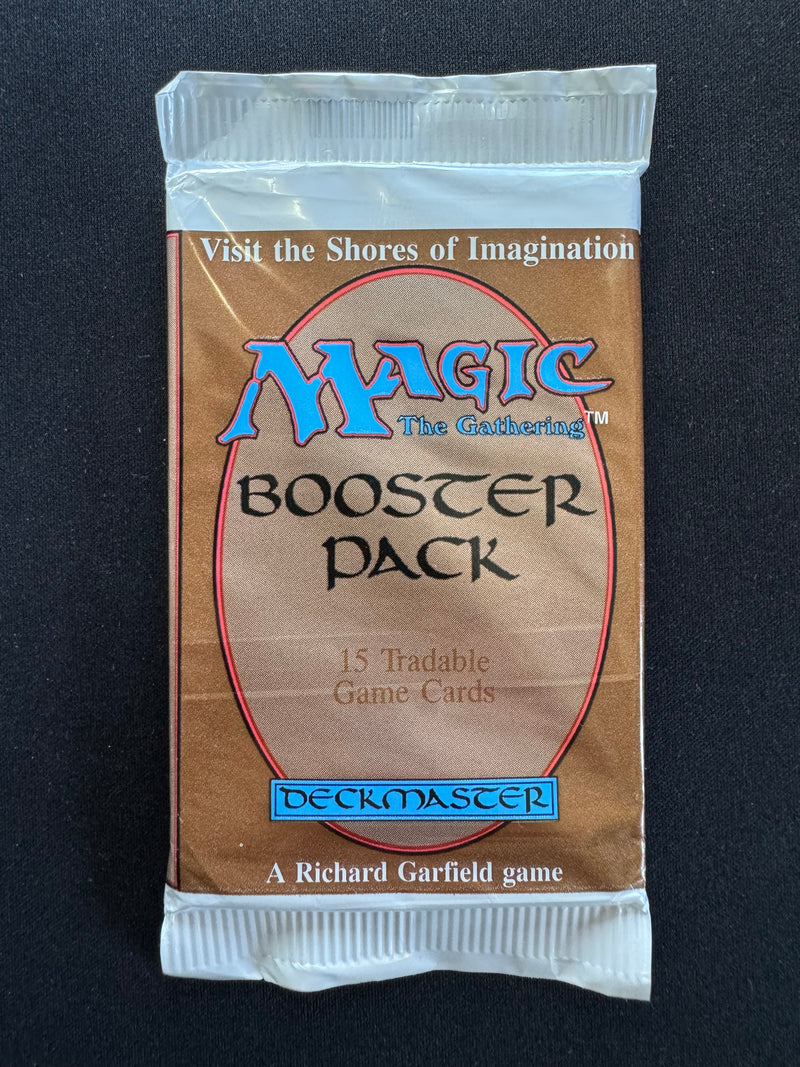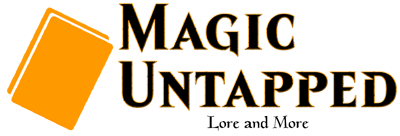The look of Magic: The Gathering booster packs have had a long history - here's the first few years of it.
One overlooked feature of Magic is often the booster pack wrapper. With one piece of artwork, a unique font, and colorful packaging, they tell you what the set is all about and gives a hint of what's inside. And lets just say Magic has had one hell of a history when it comes to packaging.
Booster designs date back to 1993 when the game made its release. Luckily for Magic, they just missed out on the wax paper packaging era (thick 1990 Fleer baseball cards). For decades, trading cards came in waxed paper packaging, usually with a stick of the chalkiest, most stale chewing gum imaginable in there. By the late 1980s and early 1990s, plastic wrapping had replaced it. Had Magic come out in 1991, we very well could have had the game's earliest cards delivered in those sports card wax paper wrappers.
Thankfully we didn't.
In 1993, when the collectible card game's Alpha and Beta boosters came out, we had this:

Compared with what we have today, it's pretty basic. The card back is essentially the template for the booster cover. The original logo and even a Richard Garfield game listed at the bottom. The back was fun too:

Garfield Games listed prominently, and that first Wizards of the Coast logo rocking the back.
The interesting thing going through the first few expansions was the coloration changes for each one. Arabian Nights, for example, looked like this:

And that mirrored exactly what the Arabian Nights cardbacks were supposed to be like until Wizards of the Coast decided to go back to the originals for gameplay reasons.
So for the next four expansions throughout 1994, we saw a hint at what all the different card backs could have been like.
The last one to go this route was Fallen Empires.

For any player of retro MTG or collectors looking for a budget version of older Magic, you are probably familiar with Fallen Empires. Through overprinting and multiple other factors, booster packs of Fallen Empires go for around $10 or $11 to this day. Compare that to an unopened alpha/beta booster which can sell for over $15,000.
Up next was the Ice Age block. And while they still had the alternate color cardbacks as the booster cover and a graphic designers dream of a new logo, they also had a few new features. The first creature art out front. A new foil wrapping instead of plastic. And the then-new WotC logo, too.


Homelands followed, albeit with only the logo and no art on the front. By Alliances, the art was back though. And, by now, it was mid-1996. The Ice Age block ended and the Mirage block was about to begin. And this time, booster design was about to get yet another overhaul.
But we'll get to that part next time.








